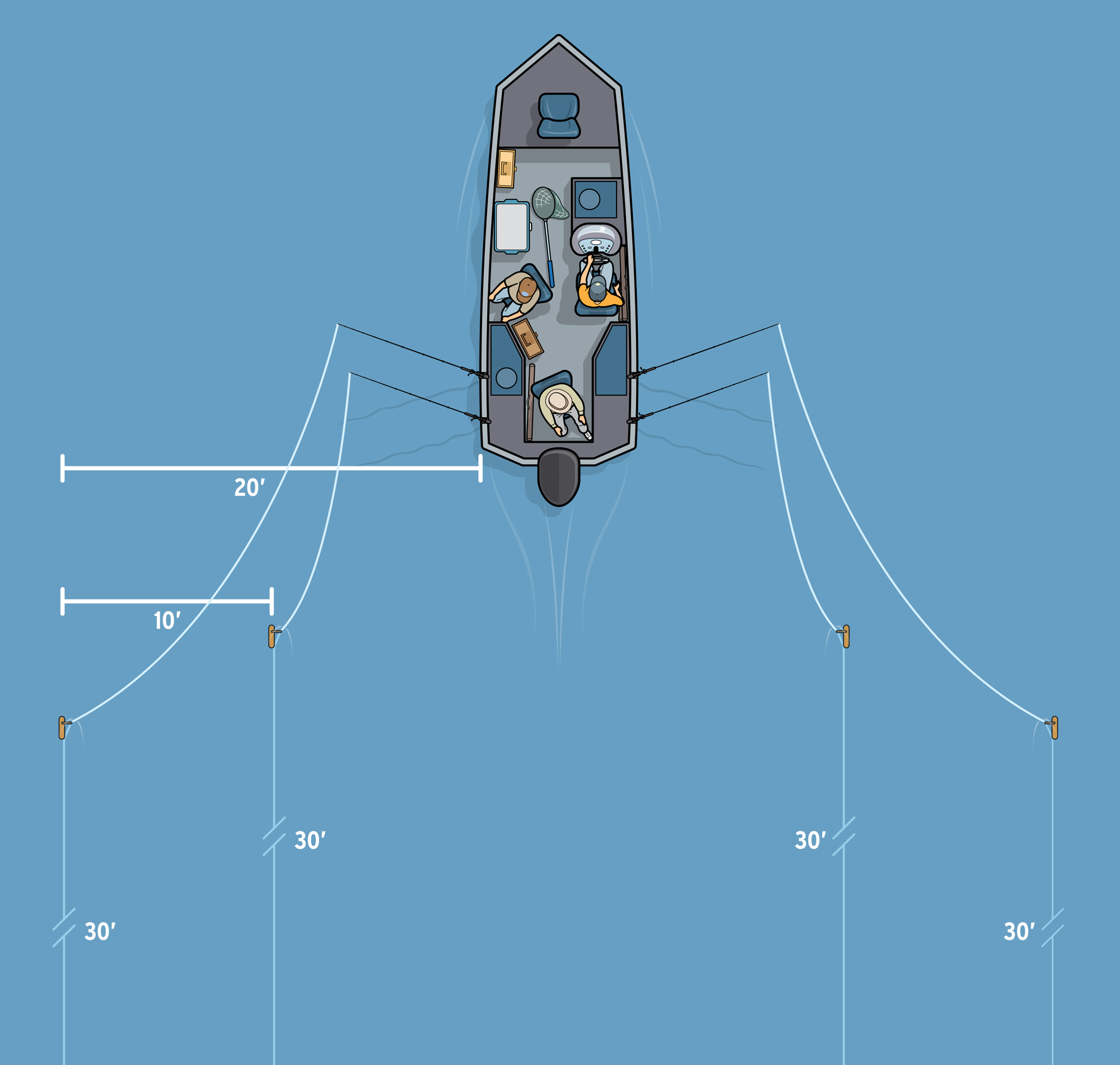Trolling Techniques

Slowly trolling down a lazy river or dashing across the waves on the open sea... nothing feels quite like it. Then, your heart skips a beat once you hear the crackling song of that reel and you know that the fight is on.
What is trolling?
Trolling is a very effective method of catching various fish in practically all environments. You rig the bait on several lines and let them drag behind the boat as you move it forward, tricking the fish into thinking it’s live prey. It can be used on lakes, rivers, shallow waters as well as the deep, blue, open sea. It’s a great way to fish at many depths, even simultaneously, allowing for a varied setup for maximum fishing power.
Speed is one of the foundations of successful trolling and it depends on several factors. Different species of fish require different bait speeds in order to be enticed, and the baits themselves have various optimal speeds for use. The best way to find out how fast you should troll for a certain type of game fish is experimentation, as it depends on the season, wind conditions and other factors, depending on the region. The following information is meant as a rough estimate, to be corrected as you learn what the fish like.
2-3 knots for inshore trolling e.g. Permit, Snook, Trout, Bass.
2-4 knots for nearshore trolling e.g. Cobia (also offshore), King Mackerel, Bonito.
5-8 knots for bottom trolling e.g. Red Snapper, Amberjack, Groupers.
10 knots for large pelagic game fish e.g. Billfish, Sailfish, Tuna, Wahoo.
Trolling equipment
Trolling can be done with any type of boat, regardless of size.
You can use practically any type of rod, however it is recommended you bring heavier rods when going after big pelagic game fish. Any basic reel will do, but results will be limited. Specialized trolling reels allow for much more line to be paid out, for greater depths as well as tools that allow you to set the length, for consistent fishing success.
It is recommended to use riggers, as they allow for much greater flexibility in bait placement. A downrigger will allow you to keep your bait at a constant depth, outriggers and center riggers allow you to spread your bait out along the width of the boat, preventing tangles when turning and allowing for your bait to look like a school.
There are specialized baits and lures made for trolling, designed so that the movement seems natural to the fish. The baits are designed for certain trolling speeds, so personal experimentation is recommended. Make your own speed chart for certain types of baits to ensure you have consistent fishing results. It is also worth noting that it is best not to use lures that don’t work well at a certain speed together with optimal lures, it will reduce the overall attractiveness of your bait setup.
It’s important to remember to use lure leaders when fishing for predatory fish, especially large pelagic fish as it can easily slice the line when it bites the lure.
A GPS system is advisable as it allows for accurate tracking of your current speed, paramount for trolling. A fish finder is also useful when trolling in open waters.
Where to troll
Trolling is a universal technique and can be done on any body of water. However, these locations are known to be the places to get the best catch!
- The Great Lakes: Michigan and Erie are great places to catch Trout.
- Florida: Destin is near the continental shelf, allowing for easy access to the deep sea. On the other side of the state, Miami has the Gulf stream right on its doorstep.
- Australia: Cairns is famous for its summer heavy tackle trolling when the Giant Black Marlin breed, with light tackle trolling being constant throughout the year.
- Europe: The south-west coast of Spain and the south coast of Portugal offer great waters for Amberjack and Barracuda trolling.
- Canary Islands: The waters surrounding the Canary Island are ideal for Yellowfin and Bigeye Tuna, Blue Marlin, Spearfish and White Marlin.